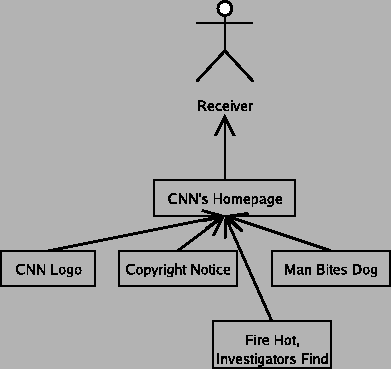The difference between "expression" and "message" is mostly that a "message" can lead a much more dynamic life. Many modern, dynamic messages are only useful in relation to other messages. For instance, "the homepage of CNN", in the most pure sense, is really "a program that assembles the latest news and a list of links to CNN's other web services and shows it to the user", not the specific HTML you receive when your browser retrieves "http://www.cnn.com/". That specific HTML page may never be seen again, but the description based on what the homepage program does is always true, regardless of the news.
 |
Thus, the best representation of "the home page of CNN" is as seen above. There's this program, that draws from variable input, and produces a web page as output.
 |
But in the end, a given human-experienced message must be entirely concrete. You can not directly "experience" CNN's homepage without actual content. (The closest you can come is that you can examine the source code of the "home page program", but that's not the same.) Until all of the arrows are actually coming from something concrete, you can't experience the abstract page. You can only experience something as in the prior figure.